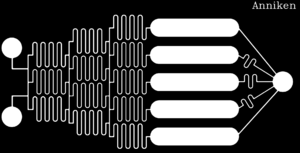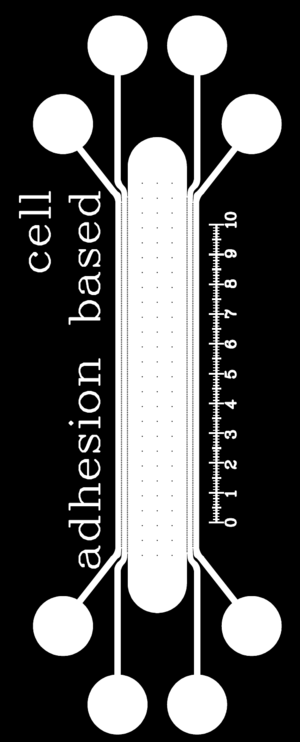Kick-off meeting spring semester 2022
From mn.fysikk.laglivlab
Present: Kristina, Erik, Claudia, Tiril, Thomas and Dag
Contents
Plan for spring 2022
Current state of project
- We have some microfluidic chip designs we can use although none are perfect (see examples below)
- Protocol for fibronectin coating is established
- Filling with cells works and cells do adhere.
- Problems with air bubbles.
- Finite lifetime of cells. Probably because they lack oxygen and correct CO2 level.
Goal for semester
Make a device that fulfills the following
- Controls CO2 level
- CO2 input can be quickly changed
- CO2 concentration is measured
- feedback from measurement to CO2 input
- Cells adhere
- Cells stay alive and divide until they are confluent
- Splitting: partial cell release by trypsination and increased flow rate
- Cells continue to adhere and divide after splitting
- Possibly perform an additional experimentlike
- migration assay by entering SDF-1/CXCL12 into a side channel
- Ca2+ activation by flow, PBS and other changes
Write a scientific paper. Possible journals:
- Micromachines (MDPI)
- Sensors (MDPI)
- Frontiers in Bioengineering and Biotechnology
- Biomicrofluidics
- Microfluidics and Nanofluidics
Specific sub-projects
CO2 measurement
In order to integrate a reliable CO2-measurement without too much development we will use the Zimmer & Peacock ISE OEM, pH sensor and software.
CO2 input change
Choice of method
- Control of CO2 in media source
- Control of CO2 in side channel
- Choose membrane to side channel
- PDMS
- Gel
- Choose membrane to side channel

